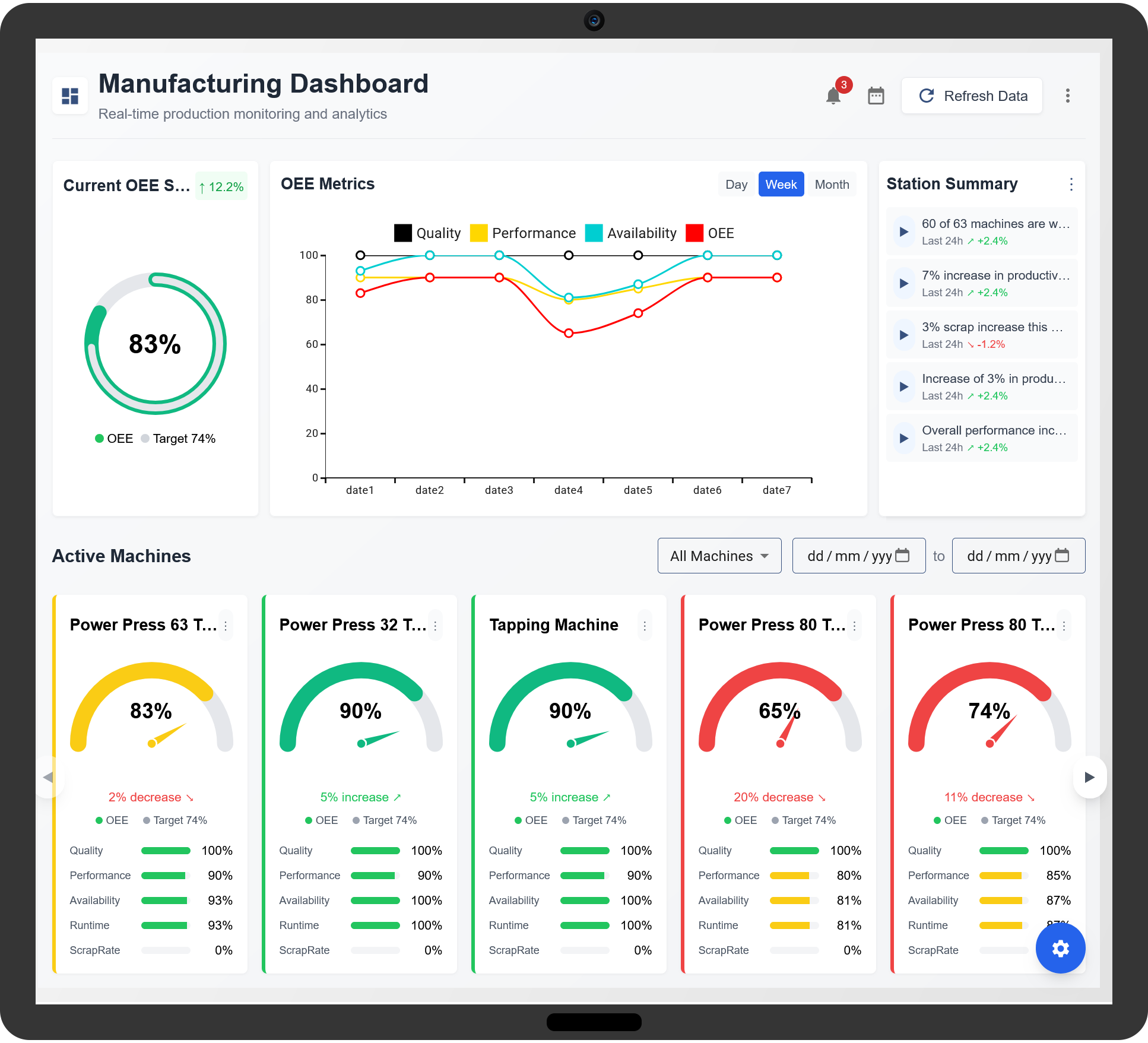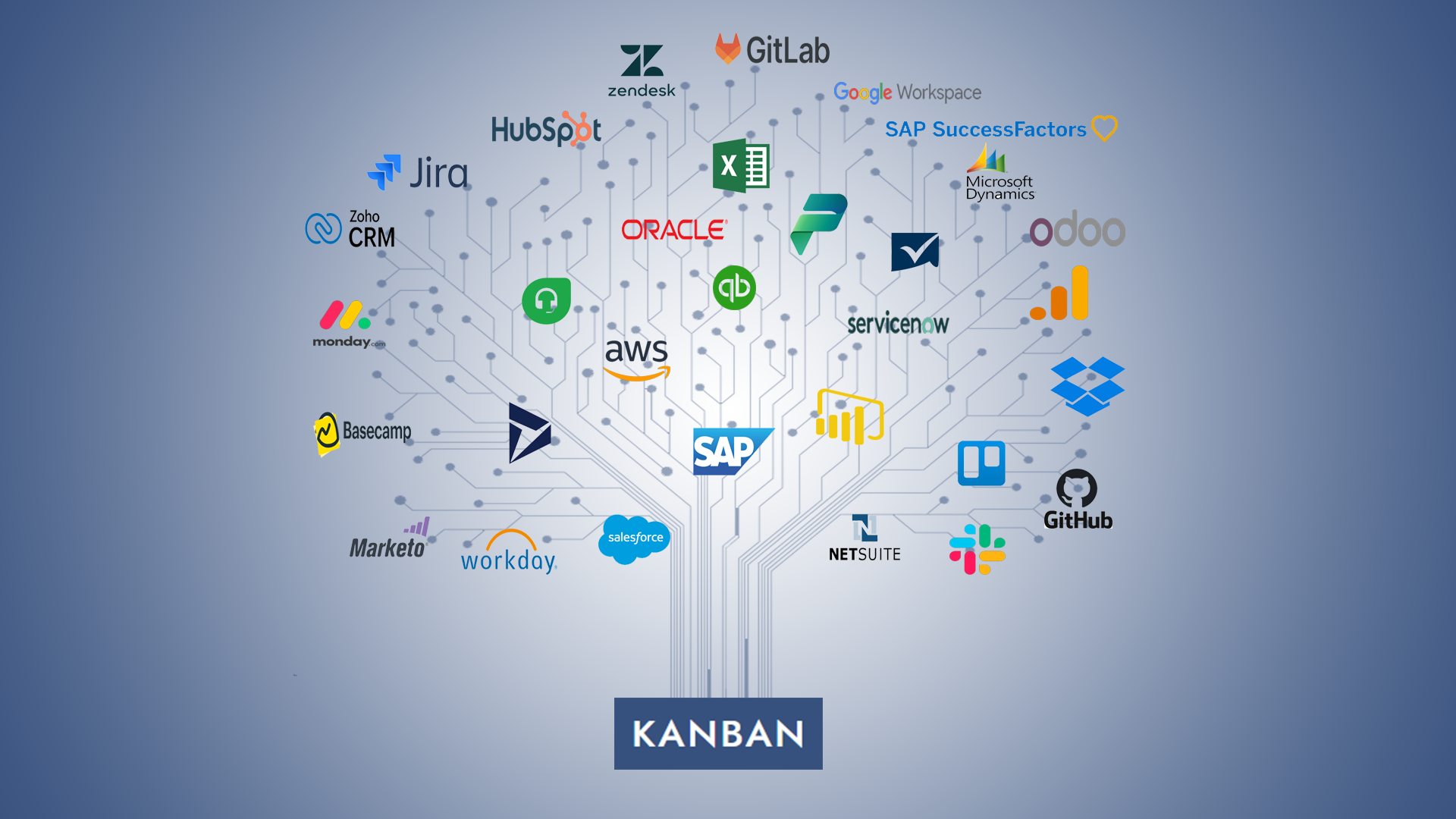In modern manufacturing and production environments, tracking the efficiency of equipment is essential for maximizing performance and minimizing downtime. Overall Equipment Effectiveness (OEE) is a key metric used to assess the efficiency of manufacturing equipment, combining three important factors: availability, performance, and quality. SAP offers a robust integration framework that enables businesses to monitor and optimize OEE by combining its enterprise resource planning (ERP) capabilities with real-time data from production equipment.

What is Overall Equipment Effectiveness (OEE)?
Overall Equipment Effectiveness (OEE) is a measure that evaluates how effectively a manufacturing asset is utilized. It is calculated by considering three components:
- Availability: The percentage of time that equipment is available for production, excluding downtime.
- Performance: The speed at which the equipment operates compared to its designed capacity. Quality: The ratio of good quality products produced compared to the total products produced.
The OEE score is calculated using the following formula:
OEE = Availability × Performance × Quality
OEE is an essential metric because it helps organizations identify inefficiencies, reduce waste, and improve overall operational productivity. However, to get the most accurate and actionable insights, businesses need integrated systems that allow real-time data monitoring and analysis, which is where SAP comes into play.
Why SAP Integration is Crucial for OEE Management
SAP's integration with OEE management systems helps organizations seamlessly collect, monitor, and analyze data from production equipment. With SAP, manufacturers can gain real-time insights into the performance, availability, and quality of their machinery, leading to enhanced decision-making, increased efficiency, and proactive maintenance.
By incorporating OEE metrics directly into SAP’s enterprise platform, companies can align their operational goals with their financial objectives. The integration of OEE data with SAP’s enterprise tools leads to improved transparency, accuracy, and overall decision-making. Below are key benefits of integrating OEE with SAP:
- Real-Time Monitoring: SAP enables businesses to track equipment performance in real-time, providing immediate visibility into operational efficiency and allowing quick corrective actions when necessary.
- Improved Resource Allocation: By tracking OEE metrics, SAP helps identify underutilized assets, enabling managers to allocate resources effectively and optimize asset usage.
- Data-Driven Insights: SAP’s powerful analytics capabilities help identify patterns and trends in equipment performance, leading to better forecasting, production planning, and scheduling.
- Reduced Downtime: SAP's predictive maintenance tools, combined with OEE data, allow manufacturers to schedule maintenance before equipment fails, minimizing unplanned downtime and improving equipment availability.
- Enhanced Continuous Improvement: SAP’s continuous monitoring and reporting of OEE scores highlight areas of inefficiency, driving continuous improvement in manufacturing processes and increasing overall equipment effectiveness over time.

Key SAP Modules for OEE Integration
SAP provides a suite of modules that can be integrated with OEE management systems. These tools facilitate the real-time collection and analysis of data, as well as the seamless management of maintenance and production activities:
1. SAP Manufacturing Execution (SAP ME)
SAP Manufacturing Execution is a comprehensive tool that helps track and manage manufacturing processes in real time. It plays a critical role in OEE management by providing detailed data on equipment availability, performance, and quality. SAP ME captures data from machines and integrates it with other SAP modules for a centralized view of production efficiency.
- Captures real-time data on machine performance and downtime.
- Provides detailed information on production speed, output, and product quality.
- Links directly to SAP’s ERP systems for seamless integration across departments.
2. SAP Plant Maintenance (SAP PM)
SAP Plant Maintenance is a key tool for managing equipment maintenance activities, a critical component of improving equipment availability. By integrating OEE data with SAP PM, manufacturers can schedule and track preventative and corrective maintenance based on real-time performance data, minimizing equipment downtime and maximizing OEE.
- Schedules preventive maintenance based on OEE data to avoid unexpected breakdowns.
- Integrates with production schedules to ensure minimal disruption during maintenance.
- Tracks maintenance history to improve the longevity and reliability of assets.
3. SAP S/4HANA Manufacturing
SAP S/4HANA Manufacturing is a powerful suite designed for real-time data processing and analytics. It provides manufacturers with the ability to analyze OEE data from multiple production lines and equipment, helping to identify inefficiencies, performance issues, and areas for improvement.
- Offers real-time analytics and dashboards to track key OEE metrics.
- Uses machine learning algorithms to predict potential failures and identify root causes of inefficiency.
- Provides visualizations and reports to assist in decision-making and performance optimization.
How to Integrate SAP with OEE Management Systems
Integrating SAP with OEE management systems requires careful planning and coordination across multiple teams. The following steps outline the process of successful integration:
Step 1: Define Key Performance Indicators (KPIs)
Before integrating SAP with OEE systems, it is essential to define the key metrics and KPIs that will be tracked. These typically include machine availability, performance efficiency, and product quality. Having a clear understanding of these KPIs will guide the integration process and ensure that the data collected is meaningful.
Step 2: Implement Data Collection Systems
To effectively monitor OEE, manufacturers must implement data collection systems on machines and production lines. These systems should capture real-time information related to equipment uptime, production speed, and product quality. SAP can integrate with these systems to automatically collect and process the data, eliminating manual tracking errors.
Step 3: Integrate with SAP Modules
Once the data collection systems are in place, the next step is to integrate the OEE data into SAP’s relevant modules. This ensures that the OEE data flows seamlessly into SAP Manufacturing Execution, SAP Plant Maintenance, and SAP S/4HANA Manufacturing for further analysis and action. Integration with SAP’s ERP system allows for a holistic view of production performance across the organization.
Step 4: Set Up Dashboards and Reporting
With the OEE data now integrated into SAP, set up dashboards and reporting tools to visualize and monitor performance. SAP provides customizable dashboards that display key OEE metrics, such as availability, performance, and quality, as well as overall OEE scores. This makes it easier for managers and teams to track performance in real time and make informed decisions.
Step 5: Analyze and Optimize
After implementing SAP’s OEE management system, continuous monitoring and analysis are necessary. Use SAP’s analytical tools to review OEE data and identify trends, inefficiencies, and areas for improvement. Proactively address issues related to equipment downtime, performance bottlenecks, or quality defects, using the insights provided by SAP’s real-time analytics.
Challenges and Solutions in SAP OEE Integration
While SAP offers a comprehensive framework for OEE integration, businesses may face challenges during implementation. These challenges include data inconsistencies, integration complexity, and resistance to change. SAP helps overcome these challenges in the following ways:
- Data Accuracy: SAP integrates with automated data collection systems to ensure accurate, real-time information, reducing the risk of manual errors.
- Seamless Integration: SAP’s robust integration capabilities allow OEE data to flow smoothly between different modules and systems, ensuring a unified view of equipment performance.
- Change Management: SAP’s user-friendly interfaces and support resources help ease the transition to a new system, promoting user adoption and reducing resistance.
SAP Integrates with OEE(Overall Equipment Effectiveness)
What is SAP OEE Integration?
SAP OEE Integration refers to the seamless connection between SAP software and Overall Equipment Effectiveness systems, enabling better management of equipment performance data, streamlining workflows, and enhancing manufacturing efficiency.
How does SAP integrate with OEE systems?
SAP integrates with OEE systems by connecting data sources, such as equipment sensors and manufacturing execution systems, to provide real-time performance data. SAP collects, processes, and analyzes this data to monitor availability, performance, and quality metrics.
What benefits does SAP integration bring to OEE management?
SAP integration brings several benefits to OEE management, including improved equipment uptime, enhanced data accuracy, better decision-making, reduced downtime, and optimized production efficiency through real-time insights and automated processes.
How does SAP help in real-time monitoring of equipment performance?
SAP allows for real-time monitoring by collecting and analyzing data from equipment sensors, offering up-to-date insights on equipment performance. This enables operators to address potential issues before they lead to downtime.
Can SAP OEE integration reduce production downtime?
Yes, SAP OEE integration helps reduce downtime by providing detailed analytics and alerts when equipment performance is below standard, allowing for timely intervention and preventive maintenance, thus minimizing unplanned downtime.
What role does SAP play in improving equipment utilization?
SAP supports better equipment utilization by providing insights into equipment performance, identifying underperforming assets, and helping optimize asset scheduling, ensuring that equipment is used efficiently and effectively.
How does SAP support the collection of data for OEE tracking?
SAP supports data collection for OEE tracking by integrating with sensors, manufacturing execution systems (MES), and automated systems. This ensures that real-time data on equipment availability, performance, and quality is captured and analyzed.
Can SAP OEE integration enhance decision-making for maintenance scheduling?
Yes, SAP OEE integration enhances decision-making for maintenance scheduling by providing predictive insights and performance data. This allows for proactive maintenance planning, reducing the risk of unexpected breakdowns.
How does SAP integrate with manufacturing execution systems (MES) for OEE data?
SAP integrates with MES by linking OEE data collected from manufacturing floors. This ensures that real-time equipment performance data from MES systems is processed and analyzed within SAP for better overall decision-making.
What kind of reports can be generated through SAP integration with OEE?
SAP integration with OEE allows for the generation of detailed reports, including availability, performance, quality, downtime analysis, root cause analysis, and overall equipment effectiveness reports to support informed decision-making.
How does SAP OEE integration help in root cause analysis of production issues?
SAP OEE integration provides data on equipment failures, downtime, and performance metrics, enabling users to perform root cause analysis to identify the underlying reasons for production inefficiencies and make data-driven improvements.
Does SAP integration with OEE support predictive maintenance?
Yes, SAP integration with OEE systems supports predictive maintenance by using data analytics to predict equipment failures before they occur, ensuring that maintenance is scheduled proactively to avoid costly breakdowns.
How does SAP enable the optimization of equipment performance in OEE systems?
SAP enables optimization by continuously collecting data from equipment, analyzing performance metrics, and providing actionable insights for operators to enhance machine performance and reduce inefficiencies across the manufacturing process.
Can SAP integration assist in benchmarking OEE performance across multiple plants?
Yes, SAP integration allows businesses to benchmark OEE performance across different plants by standardizing data collection and reporting, enabling cross-plant comparisons and driving continuous improvement efforts across the organization.
How secure is the data within SAP OEE integration systems?
SAP ensures the security of data within OEE integration systems through robust encryption protocols, secure data transmission methods, and comprehensive user access control, adhering to industry best practices for data protection and privacy.